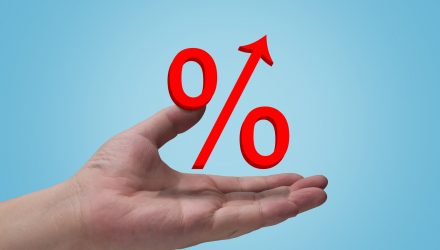“The cost of money is certainly a consideration in M&A, particularly for highly leveraged deals,” said Bruno. “Our hedge ratios have seen an increase, which indicates more stock-based financing, but at this point, however, there is a substantial amount of cash still available to both financial and strategic buyers. Private equity firms have raised tens of billions of dollars in new funds over the past several years that they need to put to work. Similarly, corporations have billions of dollars of cash on the books. Economic growth – and a robust stock market – remain supportive and are important factors.”
Currency Hedging Against a Rising Tide of Rates, U.S. Dollar
The rise of rates and the U.S. dollar have presented challenges abroad, particularly in the emerging markets sector. That has only been exacerbated by the latest trade wars, particularly the tariff-for-tariff tennis match between the United States and China.
However, currency hedging via developed markets through an ETF like HFXI has allowed investors to lessen the effects of rising rates and a strengthening greenback as opposed to their less-developed peers in emerging markets. HFXI seeks investment results that correspond generally to the price and yield performance of its underlying index, the FTSE Developed ex North America 50% Hedged to USD Index, which is an equity benchmark of international stocks from developed markets, with approximately half of the currency exposure of the securities included in the underlying index “hedged” against the U.S. dollar on a monthly basis.
“A stronger dollar tends to attract capital to the US, but the developed countries are in a much better position than most emerging markets when it comes to competing for financial resources,” Bruno said. “European capital markets are deep and well established and can provide access to funds priced in Euros. Because many goods are priced in dollars, these countries may actually become more competitive as the dollar strengthens.
“In terms of interest rates, the US Federal Reserve is ahead of most of the developed world in the tightening cycle so that the reaction of markets here may provide some insight into what we can expect in Europe. It seems likely that rising rates will cause some dislocation there as well, but how significant that will be will depend on a number of factors including overall economic growth and the pace of tightening.”
According to Bruno, HFXI uses a 50% currency hedge that is able to absorb any volatility seen in the U.S. dollar. This strategy allows HFXI investors to obtain exposure to international markets with the diversification of various local currencies as opposed to simply one currency to help decrease risk.
“We call this the ‘hedge of least regret,'” said Bruno. “It helps smooth out returns, providing support for investors to maintain exposure to global markets as part of an overall portfolio diversification strategy, without taking a directional bet on any single currency. The hedging process itself is agnostic when it comes to sectors; rather, it is applied at the portfolio level. HFXI recently had exposure to 23 countries and 14 different currencies, all hedged approximately 50% to the US dollar.”
For more market trends, visit ETFTrends.com
